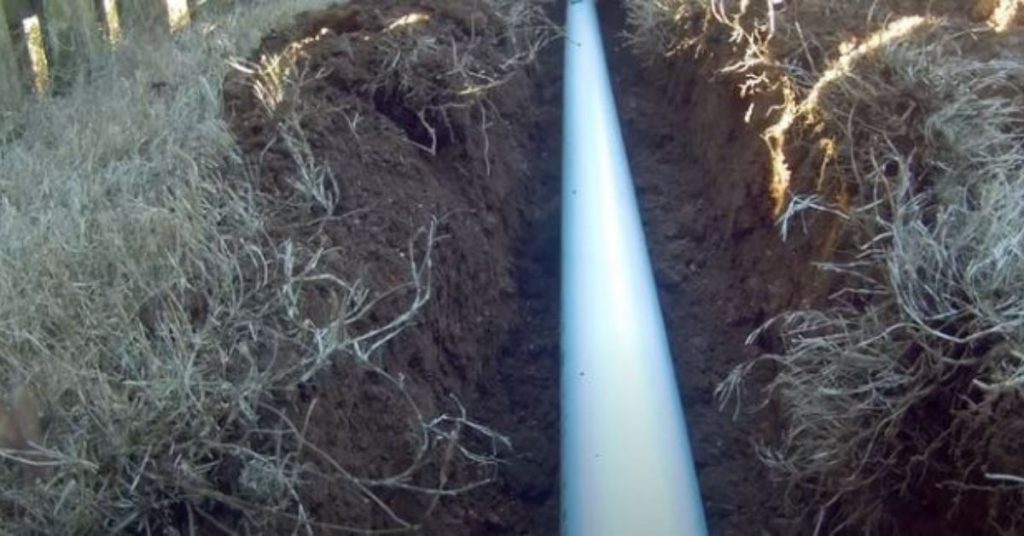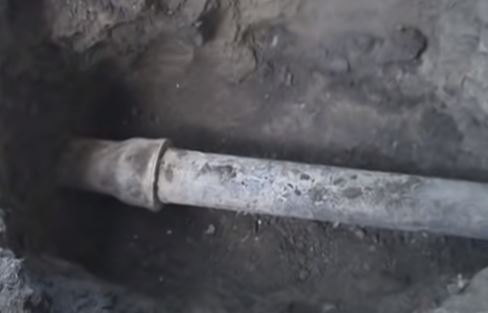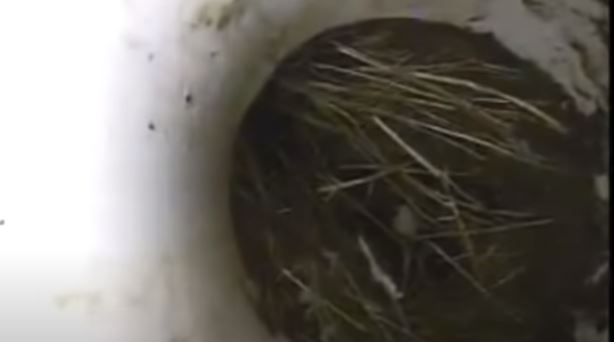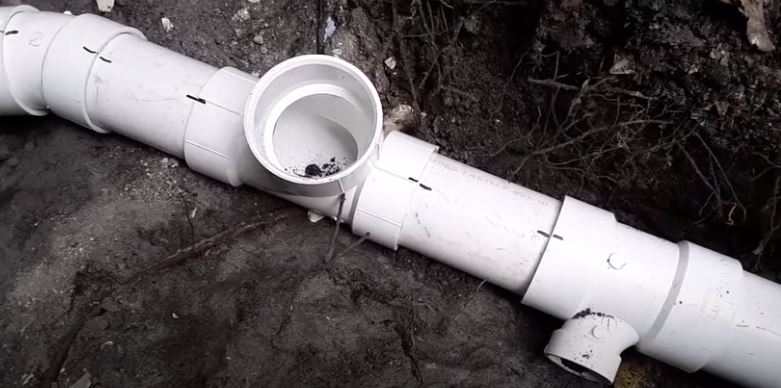
Sewer pipes are crucial for transporting wastewater away from homes and buildings. Here’s a brief summary of the common types of sewer pipes:
- Cast Iron Sewer Pipes: Cast iron pipes were historically used in older plumbing systems. They are durable and resistant to fire and corrosion. However, they are heavy and may be susceptible to rust over time.
- PVC (Polyvinyl Chloride) Sewer Pipes: PVC pipes are lightweight, cost-effective, and resistant to corrosion. They are commonly used in modern plumbing systems for both residential and commercial applications.
- ABS (Acrylonitrile Butadiene Styrene) Sewer Pipes: ABS pipes are similar to PVC but are black in color. They are known for their durability and resistance to chemicals, making them suitable for sewer and drain applications.
- Clay Sewer Pipes: Clay pipes were used historically and are still found in some older sewer systems. They are durable but can be susceptible to cracking and root intrusion over time.
- Concrete Sewer Pipes: Concrete pipes are strong and long-lasting. They are often used for larger sewer lines and municipal sewage systems.
- Orangeburg Sewer Pipes: Orangeburg pipes were used in mid-20th century sewer systems. They are made of a tar-like material and are prone to decay and collapse, making them obsolete in modern plumbing.
- Copper Sewer Pipes: Copper pipes are typically used for water supply lines but are not common for sewage due to cost and susceptibility to corrosion.
- HDPE (High-Density Polyethylene) Sewer Pipes: HDPE pipes are lightweight, flexible, and resistant to corrosion and chemicals. They are often used for larger diameter sewer lines.
Cast iron is the strongest sewer pipe. A 4-inch diameter pipe can withstand 4800 psi (pounds per square inch) of pressure. It is however prone to corrosion which makes it weak over time and is also infiltrated by tree roots which results in clogs and sewage backups.
PVC and ABS sewer pipes are the most preferred sewer pipes in modern plumbing. They are cheap, easy to install, do not corrode and most importantly are not infiltrated by tree roots. As such, PVC sewer pipes last longer than all the other types of sewer pipes.
Sewer lines pipes are usually 4 inches in diameter and are installed sloping down toward the public sewer line or septic tank with a minimum slope of 2% (1/4 inch for every foot of pipe). Larger sewer lines (6 inches in diameter or more) are however used to serve multiple dwellings or businesses.
Types of Sewer Pipes
And now let us look at all the types of sewer pipes in details. I hope by the end of this post you will have an understanding of how each sewer pipe works and what its advantages and disadvantages are.
| Type of Pipe | Pros | Cons |
|---|---|---|
| Cast Iron | Strong | Infiltrated by roots Cracks Expensive Corrodes Collapses Clogs Heavy |
| Orangeburg | Lightweight Easy to install Cost-effective | Not durable Sags Attacked by roots Clogs |
| Clay | Chemical-resistant | Bulky Tricky to cut Attacked by tree roots Porous Low strength |
| Concrete | Cost effective Durable | Heavy Not DIY-friendly |
| PVC and ABS | Not attacked by tree roots Cheap Lightweight Easy installation Smooth interior (few clogs) Lasts long | Cracks under pressure |
1. Cast Iron Sewer Pipes

Cast iron sewer pipes are mostly found in old houses. A few modern houses still have them but they are not being installed as much as plastic sewer pipes.
The main advantage of cast iron sewer pipes is their strength. As mentioned, these pipes can withstand up to 4800 pounds per square inch of pressure.
Although sewage usually doesn’t exert such high pressure, you are usually guaranteed that if heavy objects move above the sewer pipe or if there is soil shifting the sewer line will remain intact.
The main disadvantage of cast iron sewer pipes just like other items made from cast iron is that they are prone to corrosion and rust. When that happens, the pipe starts to weaken especially around pipe joints.
Tiny cracks/fissures starts to appear and sewage starts to leak. As you know, tree roots will naturally grow towards sources of water and nutrition. Domestic waste provides exactly that.
The roots force themselves through the cracks and once inside the pipe multiply rapidly due to the presence of moisture and nutrition.
Tree roots inside sewer pipes are among the top causes of sewer clogs. Solids in the wastewater are trapped by the roots resulting in clogs and eventually sewage backing up to your house.
Unlike plastic pipes, the interior of cast iron sewer pipes is uneven which encourages waste buildup and ultimately clogs. This happens especially then the pipe is corroded.
Another thing worth mentioning is that cast iron sewer pipes are quite heavy and hard to cut. As such, you need specialized equipment to cut and lift the pipes and is therefore not DIY-friendly during installation.
Cast iron pipes are also quite expensive especially when compared with PVC or ABS pipes. To put that into perspective, a 10-foot 4-inch cast iron pipe will cost as much as $60 while a similar size of PVC costs only $20.
2. Orangeburg Sewer Pipes
Orangeburg pipes, which are also known as bituminous fiber pipes are also installed in old houses. They are made from wood pulp and water-resistant adhesives and then sealed with coal tar.
These sewer pipes were installed extensively during World War II due to a shortage of cast iron. They also become very popular with plumbers of the time since they were lightweight and easy to cut.
The installation of Orangeburg sewer pipes went on until the 1970s when alternative and better materials for sewer lines was available. Almost every Orangeburg sewer line installed would need a replacement today.
The main challenge with Orangeburg sewer pipes is their durability. They are the least durable sewer pipes and few of them can go for more than 50 years.
As a matter of fact, these pipes were originally not designed for sewage use. They were meant for dry use in the electrical and telecommunications industry.
With time, it was noticed that the pipes when used to carry sewage would sag, a condition also know as bellying. When sewer pipe sag, the slope of the sewer line is altered, meaning gravity cannot carry away the sewage resulting in clogs and backups.
Infiltration by tree roots is another factor which makes Orangeburg sewer pipes deteriorate faster. That is why they are almost never used today.
3. Clay Sewer Pipes

Clay sewer pipes are another sewer line pipe type found in old houses. They were used before and during World War II. They are not as popular as they were then bust can still be used.
The main advantage of clay sewer pipes is that they are inert (chemically inactive). This means that they are highly resistant to chemical degradation (unlike cast iron sewer pipes).
The average homeowner will not install a clay sewer pipe as a DIY. You need to be skilled to know how to cut it and they are also quite heavy.
Clay being so porous means that it attracts lots of tree roots. The tree roots push hard against it and after some time the pipes give in to the pressure and it starts to crack.

If you have a clay sewer line, you will always have to deal with tree roots inside the sewer pipe. Again, that will result in clogs and eventual sewage backups.
Clay sewer pipes unlike cast iron pipes have low strength and are likely to crack or snap under pressure. You should therefore avoid moving heavy machines above the sewer line if you have these type of sewer pipes.
4. Concrete Sewer Pipes

Although not very popular, reinforced concrete pipes are the preferred sewer pipes in modern plumbing after plastic sewer pipes. They are used both in sanitary sewer systems and storm sewers.
Reinforced concrete sewer pipes can last for as long as 100 years or more. It is no wonder most municipalities and contactors are starting to appreciate them more.
As you would expect, concrete sewer pipes are bulky, tricky to cut and install for the average homeowner and you will therefore need to work with a professional to install them.
On the bright side, reinforced concrete sewer pipes are affordable and have a high strength. They therefore last long with fewer problems.
5. PVC and ABS Sewer Pipes

If you are considering replacing your sewer line, these are the pipes you want to consider. PVC (polyvinyl chloride) and ABS (acrylonitrile butadiene styrene) have many advantages and few disadvantages.
The main difference between PVC and ABS is that PVC is white and is very flexible while ABS is black and stronger and will therefore withstand a higher shock.
Whichever pipe you pick among the 2 for use a sewer pipe it will serve you very well. Just remember that the 2 use different adhesives to connect 2 pipes together.
The main advantage of PVC and ABS sewer pipes compared to other pipes is their longevity. Plastic pipes as you know are corrosion-resistant and impervious and will therefore not be affected by water in any way.
Unlike cast iron, clay and Orangeburg pipes which are infiltrated by roots, roots will not access the inside of a plastic pipes. This means your sewer line will not crack and most importantly will not clog regularly.
It is important to mention that plastic sewer pipes are so smooth which enhances the flow of wastewater from the house and out to the public sewer line or septic tank. Again, this means fewer clogs and backups.
Another advantage of plastic sewer pipes is their cost. They are the cheapest sewer line pipes which is good for your bottom line.
Installation-wise, plastic pipes are very easy and fast to install. They are easy to cut and are lightweight which also imparts the overall cost of sewer line replacement. This makes it a favorite for DIY enthusiasts.
PVC and ABS sewer pipes are also very versatile. You can use them alone or in combination with other pipes like cast iron or clay sewer pipes.
Conclusion
And that is it in as far as sewer pipe types and materials are concerned. I would however like to mention that sewer line repairs and replacement is a job best left to professionals.
The cost to fix sewer lines is quite high but DIYs can make problems worse that they were in the beginning and that is why you need to work with the pros. Plumbers also know all the plumbing codes and the last thing you want to do is go contrary to your area’s building codes.
